Historical Ships: A Fascinating Look at the Past
- Updated on:
- Written by Gary Renshaw
There are a number of famous ships that have played a significant role in shaping the course of human history. From ancient times to the modern era, historic ships have been used for transportation, exploration, trade, and warfare. The legacy of these ships lives on today, as many of them have been preserved in museums or as tourist attractions, providing a glimpse into the past and a deeper understanding of our maritime history.
One of the most famous is the historic ship HMS Victory, which played a crucial role in the Battle of Trafalgar in 1805. This British navy ship, which served as Admiral Nelson’s flagship in the British fleet, is now a museum ship in Portsmouth (UK), attracting thousands of visitors each year. Another famous ship is the Titanic, which sank in 1912 on its maiden voyage, resulting in the loss of over 1,500 lives. The story of the Titanic has captured the imagination of people around the world and has been the subject of countless books, films, and documentaries.
Historical ships are not just important for their cultural and historical significance, but also for their technological advancements. Many of these vessels were at the forefront of maritime technology, incorporating innovations that paved the way for future developments. For example, the USS Monitor, which fought in the American Civil War, was the first ironclad warship, revolutionising naval warfare. The Cutty Sark, a famous clipper ship, was one of the fastest sailing ships of its time, thanks to its innovative design and construction.
Historical Ships: An Overview
The earliest known boats were simple rafts and canoes, used by ancient peoples for fishing and transportation. Over time, boats became more sophisticated, with the development of sails and oars allowing for greater speed and range. The ancient Egyptians, for example, used boats to transport goods along the Nile River, while the Vikings used longboats to explore and raid distant lands.
As trade and commerce grew in importance, ships became larger and more complex. The 19th century saw the rise of the steamship, which revolutionised transportation and made global trade possible on a massive scale. The first steamship to cross the Atlantic, the SS Savannah, made the journey from Savannah, Georgia to Liverpool, England in 1819.
During World War I and World War II, ships played a critical role in naval warfare. Battleships, cruisers, and destroyers were used to protect convoys of cargo ships from enemy submarines and surface vessels. The sinking of the Titanic in 1912, one of the worst maritime disasters in history, led to new safety regulations and the development of more advanced navigation and communication systems.
Today, ships continue to play a vital role in global trade and transportation. Container ships, bulk carriers, and tankers transport goods and raw materials around the world, while cruise ships and ferries provide transportation and entertainment for millions of people each year. The development of new technologies, such as autonomous ships and electric propulsion, is likely to further transform the shipping industry in the years to come.
Ancient Maritime Vessels
The history of ships dates back to ancient times. Ancient maritime vessels were an essential part of trade, warfare, and exploration. Here are some of the most notable ancient maritime vessels:
Egyptian Ships
Egyptian ships were some of the earliest vessels in history. The Egyptians built ships primarily for trade and transportation along the Nile River. These ships were made from papyrus reeds and were designed to navigate the shallow waters of the Nile. The Egyptians also built larger ships for trade along the Mediterranean coast. These ships were made from cedar wood and were equipped with sails. The Egyptians were skilled shipbuilders and their ships were renowned for their speed and manoeuvrability.
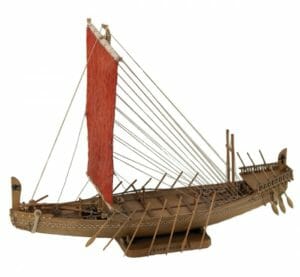
Roman Ships
The Romans were great seafarers and built a variety of ships for trade, war, and exploration. One of the most famous Roman ships was the trireme. The trireme was a warship with three banks of oars and was used in naval battles. The Romans also built cargo ships, called navis oneraria, that were used for trade. These ships were equipped with large storage areas and could carry a significant amount of cargo.

Viking Longships
The Vikings were skilled shipbuilders and sailors. They built longships, which were designed for raiding and exploration. These ships were long and narrow, with a shallow draft that allowed them to navigate shallow waters. The Vikings also built larger ships called knarrs, which were used for trade and transportation. These ships were wider and had a deeper draft than longships. The Vikings were known for their use of sails and for their ability to navigate using the stars and the sun.
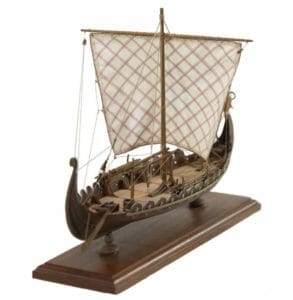
Age of Discovery Ships
During the Age of Discovery, European seafarers explored, colonised, and conquered regions across the globe. This period, which lasted from approximately the 15th century to the 17th century, saw the development of various types of ships that were essential to these explorations. In this section, we will take a closer look at three types of ships that were commonly used during the Age of Discovery: caravels, galleons, and East Indiamen.
Caravels
Caravels were small ships that were designed specifically for exploration. They had a shallow draft, which allowed them to chart unknown waters, and they were equipped with lateen sails that enabled them to sail to windward. Caravels had a small crew and cargo space for voyages of up to a year. These ships were instrumental in the early exploration of the Atlantic and Indian Oceans.
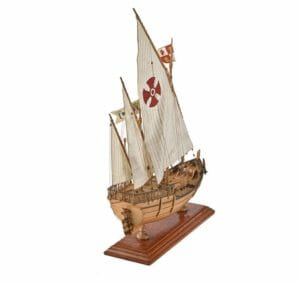
Galleons
Galleons were larger ships that were primarily used for war and commerce. They were heavily armed and had a high freeboard, which made them ideal for naval battles. Galleons were also used for trade and exploration, and they were often used to transport goods and people between Europe and the New World. These ships were a common sight during the Age of Discovery.
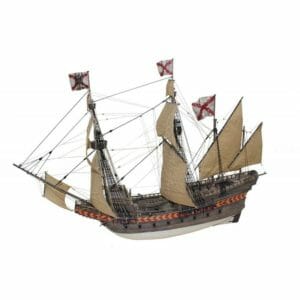
East Indiamen
East Indiamen were large, sturdy ships that were used for trade between Europe and the East Indies. They were designed to carry large amounts of cargo, and they were heavily armed to protect against pirates and privateers. East Indiamen were used by the British and Dutch East India Companies, and they played a significant role in the development of trade between Europe and Asia.
Colonial Ships
During the colonial period, ships played a vital role in the transportation of people and goods across the world. The colonial ships were used for trading, exploration, and transportation of settlers to the New World. Different types of colonial ships included:
Barks
Barks were three-masted sailing ships that were commonly used for long-distance travel. They were capable of carrying large amounts of cargo and had a relatively shallow draft, which allowed them to navigate shallow waters. Barks were popular in the 19th century and were used for trading between Europe and the Americas.
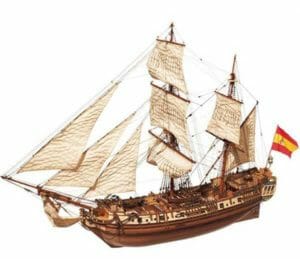
Ketches
Ketches were two-masted sailing ships that were used for both fishing and trading. They were known for their stability and versatility, which made them popular among sailors. Ketches were commonly used in the 17th and 18th centuries and were used for coastal trading and fishing.
Clippers
Clippers were fast sailing ships that were used for transporting goods and passengers across long distances. They were designed for speed and were capable of travelling at high speeds even in adverse weather conditions. Clippers were popular in the mid-19th century and were used for trading between Europe and Asia.
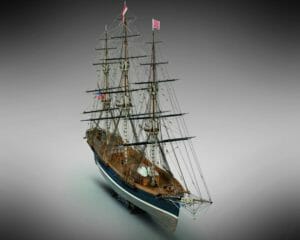
Pinks
Pinks were small sailing ships that were commonly used for fishing and coastal trading. They were known for their simplicity and affordability, which made them popular among fishermen and traders. Pinks were commonly used in the 16th and 17th centuries.
Sloops
Sloops were small sailing ships that were used for coastal trading and fishing. They were known for their speed and manoeuvrability, which made them popular among sailors. Sloops were commonly used in the 18th and 19th centuries.
Brigantines
Brigantines were two-masted sailing ships that were used for trading and exploration. They were known for their speed and versatility, which made them popular among sailors. Brigantines were commonly used in the 16th and 17th centuries and were used for trading between Europe and the Americas.
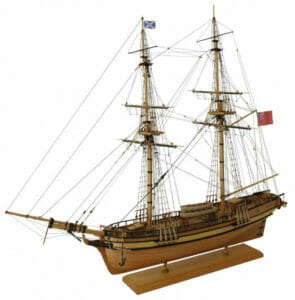
Warships of the 17th to 19th Centuries
During the 17th to 19th centuries, warships underwent significant changes in design, construction, and armament. This period saw the rise of naval powers and the development of new tactics and technologies, such as the introduction of steam engines and ironclads. In this section, we will explore the three main types of warships that were used during this period: Ships of the Line, Frigates, and Ironclads.
Ships of the Line
Ships of the Line were the backbone of naval warfare during the 17th to 19th centuries. These were large, heavily armed vessels that were used in fleet engagements. The term “Ship of the Line” refers to the tactic of lining up these ships in a battle formation, with the aim of breaking through the enemy’s line and engaging in close combat.
Ships of the Line were classified according to the number of guns they carried, with the largest and most powerful being the First Rates. These ships carried up to 120 guns and were used as flagships. The Second and Third Rates carried fewer guns but were still formidable vessels, while the Fourth and Fifth Rates were smaller and used for scouting and convoy duties.
Frigates
Frigates were smaller and faster than Ships of the Line, and were used for a variety of roles, including scouting, raiding, and protecting merchant convoys. These ships were typically armed with fewer guns than Ships of the Line, but were more manoeuvrable and could operate in shallower waters.
Frigates were classified according to their size and the number of guns they carried. The largest frigates, known as “Heavy Frigates,” carried up to 60 guns and were used in fleet actions. The smaller “Light Frigates” carried between 20 and 40 guns and were used for independent operations.
Ironclads
Ironclads were a new type of warship that emerged in the mid-19th century. These were heavily armoured vessels that were designed to resist enemy fire. Ironclads were powered by steam engines and were armed with a combination of guns and torpedoes.
Ironclads were classified according to their armour and the number/type of guns they carried. The largest and most heavily armoured ironclads were known as “Battleships,” while smaller and less heavily armoured vessels were known as “Cruisers.”
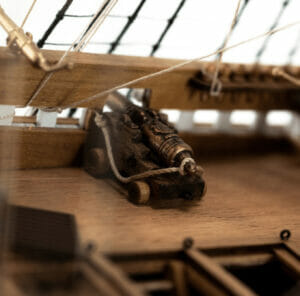
Iconic Historical Ships
HMS Victory
HMS Victory is a first-rate ship of the line built in the 18th century. She is most famous for her role as Lord Nelson’s flagship at the Battle of Trafalgar in 1805. The ship has unique features, such as three gun decks, a total of 104 guns, and a crew of over 800 men. HMS Victory was captained by Admiral Nelson and was used for naval warfare.
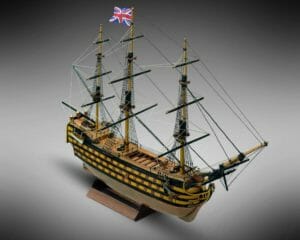
USS Constitution
USS Constitution is a wooden-hulled, three-masted heavy frigate of the United States Navy. It was one of six union navy ships authorised by Congress and is the world’s oldest commissioned naval vessel still afloat. The ship featured copper plating, which earned her the nickname “Old Ironsides” and was captained by Isaac Hull and was used for naval warfare.

The Titanic
The Titanic was a British passenger liner that sank in the North Atlantic Ocean on April 15, 1912, after hitting an iceberg during her maiden voyage from Southampton to New York City. The ship featured luxurious amenities and advanced safety features for the time. The ship was captained by Edward Smith and was used for commercial passenger transport.
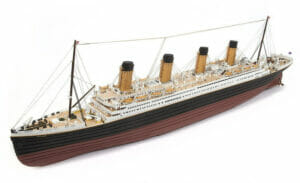
The Mayflower
The Mayflower was an English ship that transported the first English Puritans, known today as the Pilgrims, from Plymouth, England, to the New World in 1620. The ship was captained by Christopher Jones and was used for transportation of passengers and cargo.
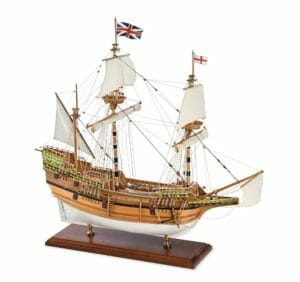
HMS Beagle
HMS Beagle was a British Government Royal Navy ship that is famous for carrying Charles Darwin on his second voyage to South America and the Galapagos Islands. The ship was of a small size and shallow draft, which allowed her to explore shallow waters. The ship was captained by Robert FitzRoy and was used for hydrographic surveying.
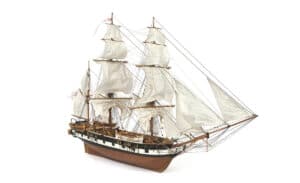
The Santa Maria
The Santa Maria was a Spanish ship that is famous for being one of the three ships that Christopher Columbus used on his first voyage to the Americas in 1492. The ship was captained by Columbus himself and was used for exploration and discovery.

The Cutty Sark
The Cutty Sark was a British clipper ship that was built in 1869 for the China tea trade. She is famous for her speed and beauty and is one of the last remaining clipper ships in the world. The ship features a sleek design and three masts. The ship was captained by various captains and was used for commercial cargo transport.
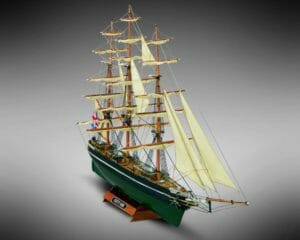
HMS Supply
HMS Supply was a Royal Navy armed tender that was used in the late 18th century to transport supplies and personnel to the colonies in Australia.
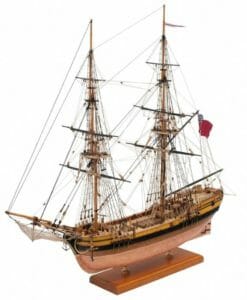
Create Detailed Replicas of Famous Historical Ships with Modelers Central
Details are critical to authenticity in model ship building, as the goal is to create accurate and realistic models of historical ships. Modelers Central’s range of model ships are available in popular scales and we can help you through every step – from selecting the right model to finding the right accessories and tools.
Get the best in impressive and captivating model ships for your collection – contact Modelers Central.
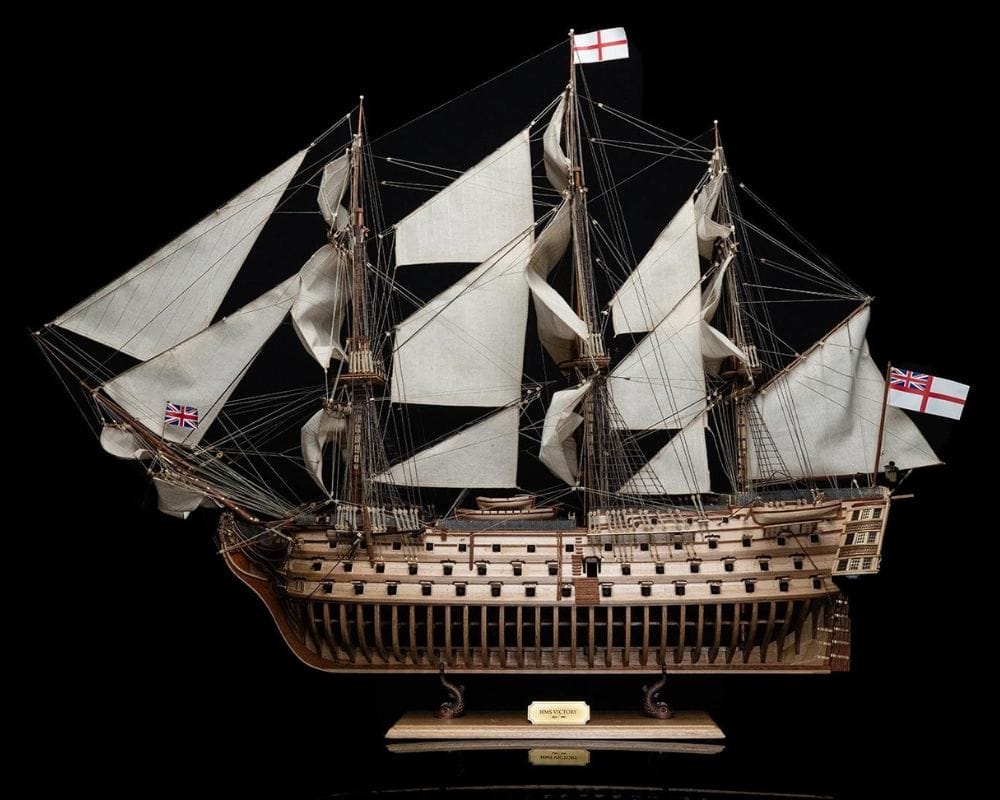
Learn The Art Of Building A Model Ship
Get started in wooden model ship building today









